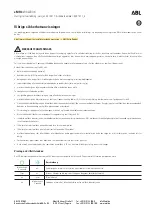
The driver and front passenger
airbags will deploy during significant
frontal and near frontal collisions.
The driver and passenger front airbag system consists of:
•
Driver and passenger airbag modules
•
Crash sensors and monitoring system with readiness
indicator. See
Crash Sensors and Airbag Indicator
later in
this chapter.
Proper Driver and Front Passenger Seating Adjustment
WARNING:
National Highway Traffic Safety Administration
(NHTSA) recommends a minimum distance of at least 10 inches
(25 centimeters) between an occupant’s chest and the driver airbag
module.
To properly position yourself away from the airbag:
•
Move your seat to the rear as far as you can while still reaching the
pedals comfortably.
•
Recline the seat slightly (one or two degrees) from the upright
position.
After all occupants have adjusted their seats and put on safety belts, it is
very important that they continue to sit properly. A properly seated
occupant sits upright, leaning against the seat back, and centered on the
seat cushion, with their feet comfortably extended on the floor. Sitting
improperly can increase the chance of injury in a crash event. For
example, if an occupant slouches, lies down, turns sideways, sits forward,
leans forward or sideways, or puts one or both feet up, the chance of
injury during a crash is greatly increased.
48
Supplementary Restraints System
2013 Navigator
(nav)
Owners Guide gf, 1st Printing
USA
(fus)
















































